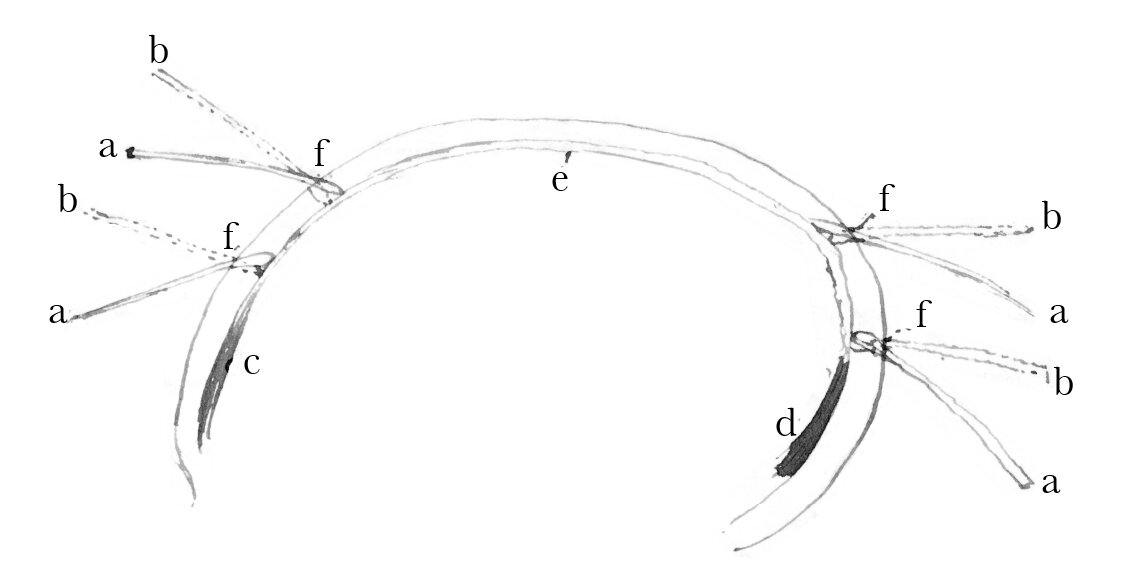From John Wood 19 April 1871
68, Wimpole Street, | Cavendish Square. W.
April 19th. 1871
My dear Sir
The erection of the hair is undoubtedly caused chiefly by the unstriped muscles described by Kölliker, and affects the whole body in violent emotion or the application of cold. (associated with “goose skin”)1
The Hindus, I believe, have a saying that great joy causes the hairs of the whole body to stand up. But the action of the occipito frontalis upon the scalp has a special influence upon the direction of the hair, as I have ascertained by direct experiment when the hair is cut short in persons who have the occipito frontalis in good command & force.2 I explain the action thus.— the direction of the hair in the front part of the scalp is forwards & downwards,—that of the back of the head downwards. The action of the anterior belly of the occipito frontalis is to draw the “galea capitis” or epicranial aponeurosis downwards & forwards—that of the posterior belly, the reverse way. This acts upon the bulbs of the hairs which are deeply implanted in fat & attached closely to the cranial aponeurosis, and draws them in the same direction more directly, & to a greater extent than it acts upon the surface of the skin itself through which the hairs emerge.

This diagram will probably explain my meaning better,—in which, a—represents the quiescent direction of the hairs.— b—the elevating action of the antr belly (c) & postr belly (d) of the occipito frontalis respectively, drawing down the bulbs of the hairs a.a forming the short arms of the levers and turning them as levers on the fulcrum (f) elevating the long arms to the positions, b.b. Now the hairs of the head are certainly most extensively affected in the “standing-on-end” process. They are, moreover, longer levers and require more power to move them than others. This power is not proportionately given by the greater size of their unstriped muscles; and is, as I believe, supplemented by the occipto-frontalis & thus more directly influenced by the will & emotions than the unstriped fibres can be
These latter cannot certainly be considered as homologous with the “panniculus carnosus” but they have the same relation to it as they have to the occipito frontalis and they are assisted by it in raising the hairs & spines voluntarily in porcupines, hedgehogs & badgers in the same manner as by the occipito frontalis in the standing hairs in Man.3
I remain Dear Sir | Yours very sincerely | John Wood
P.S. | Will let you have bye & bye our observations upon the action of the platysma.4
Chas. Darwin Esqre | Down Beckenham
CD annotations
Footnotes
Bibliography
Correspondence: The correspondence of Charles Darwin. Edited by Frederick Burkhardt et al. 29 vols to date. Cambridge: Cambridge University Press. 1985–.
Expression: The expression of the emotions in man and animals. By Charles Darwin. London: John Murray. 1872.
Summary
Movement of hair; action of occipito-frontalis muscle.
Letter details
- Letter no.
- DCP-LETT-7699
- From
- John Wood
- To
- Charles Robert Darwin
- Sent from
- London, Wimpole St, 68
- Source of text
- DAR 181: 142
- Physical description
- ALS 4pp †
Please cite as
Darwin Correspondence Project, “Letter no. 7699,” accessed on 24 April 2024, https://www.darwinproject.ac.uk/letter/?docId=letters/DCP-LETT-7699.xml
Also published in The Correspondence of Charles Darwin, vol. 19


